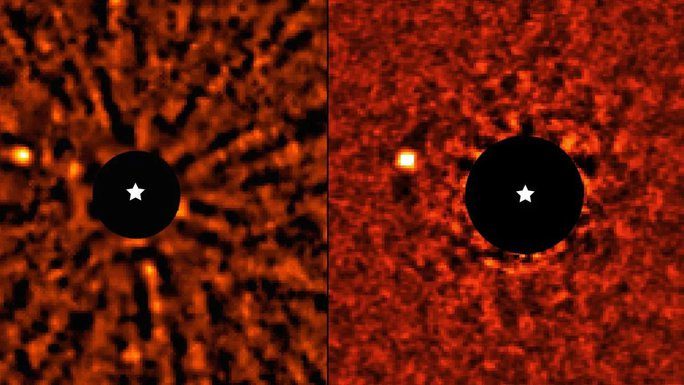Scientists have been trying to uncover the mystery that is distorting the orbit of a young star in the constellation Lepus. This mystery involves a massive entity that is 1.272 to 1.908 times the weight of Earth.
According to Space, this entity is a giant planet and represents a breakthrough achievement of the Very Large Telescope (VLT) located in Chile. Capturing an image of an exoplanet is incredibly challenging, and this is the lightest exoplanet that this advanced observational equipment has ever documented.
The star in question is named AF Leporis, located approximately 87.5 light-years from Earth in the constellation Lepus. Two groups of scientists have simultaneously studied this star following data collected by the European Space Agency’s (ESA) Hipparcos and Gaia space telescopes, which are tasked with mapping the sky.

Image of the mysterious exoplanet – (Photo: ESO).
However, AF Leporis has exhibited an unstable orbit, as if being tugged by something. This “mystery” is likely a planet that it has birthed, but it must be substantial enough that its gravitational force significantly affects the orbit of its parent star.
To identify the “mystery”, two research teams from the European Southern Observatory (ESO) mobilized the ground-based VLT. They successfully captured direct images of the planet, confirming their hypothesis.
The scientists employed the VLT’s adaptive optics system known as SPHERE, which corrects distortions caused by Earth’s atmosphere, along with a coronagraph, a device that blocks out the overwhelming light from the star, allowing for clearer observation of the surrounding environment of the star.
The imaged planet has a mass 4-6 times that of Jupiter, the largest planet in our Solar System, equating to approximately 1.272 to 1.908 times the mass of Earth. It orbits its parent star at a distance comparable to that of Saturn’s orbit around the Sun.


















































